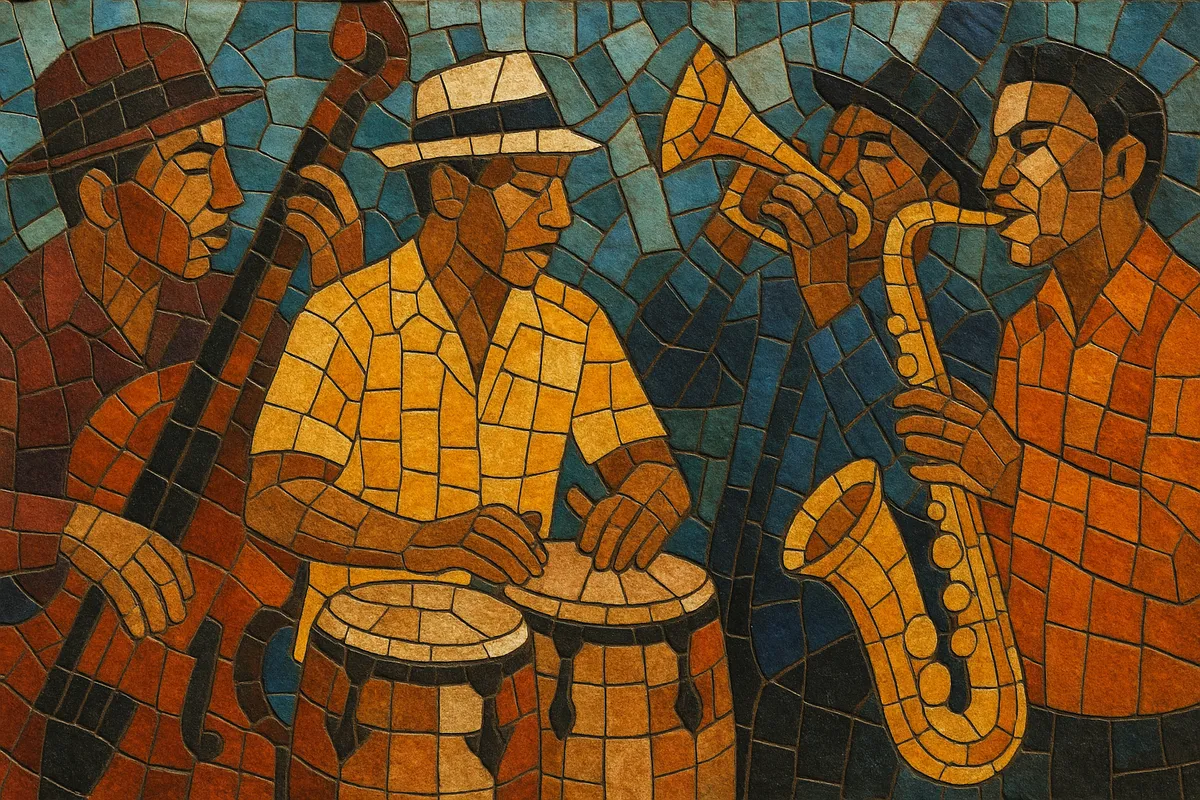Descarga is the Cuban tradition of extended, largely improvised jam sessions built on Afro‑Cuban dance grooves and montuno vamps. Emerging in 1950s Havana and later flourishing in New York, it brought the spontaneity of jazz to Cuban popular forms such as son, mambo, and chachachá.
Typically recorded by all‑star studio ensembles, descargas feature rotating solos over repeating guajeos (ostinatos), anchored by the clave and a driving percussion section. They are celebratory, high‑energy gatherings where arrangers set up simple harmonic frameworks and horn "moñas" (riffs), then let the players stretch out.
In mid‑1950s Havana, record labels like Panart organized late‑night studio sessions that captured Cuban dance musicians in a freer, more improvisatory context than typical dance‑floor sides. Drawing on son montuno, danzón‑mambo, rumba, and the then‑new chachachá—while embracing the improvisational ethos of jazz and bebop—bandleaders and arrangers created simple vamp structures that invited extended soloing.
The landmark "Cuban Jam Session" (Descarga Cubana) albums—by Julio Gutiérrez, Israel "Cachao" López, and Niño Rivera—codified the format: a tight rhythm section establishes the groove; horns state riffs (moñas) and shout responses; soloists take turns over montuno sections; and the percussion battery converses around the clave.
After the Cuban Revolution and with growing Caribbean migration, the descarga aesthetic thrived in New York. Musicians from charanga, conjunto, and big‑band Afro‑Cuban jazz scenes—Tito Puente, Machito’s circle, Eddie and Charlie Palmieri, Ray Barretto, Johnny Pacheco, and the Alegre All Stars—made descargas a fixture of club culture and recording. These sessions bridged Cuban tradition with Nuyorican creativity, setting a template for virtuoso, riff‑driven jams within the emerging salsa ecosystem.
The descarga’s open, solo‑centric framework directly informed salsa’s practice of inserting "descarga" sections into arrangements, and it anticipated the extended, high‑gear improvisations of songo and, later, timba. Live salsa concerts, all‑star ensembles, and modern Latin jazz recordings routinely end with a descarga, keeping the spirit of those 1950s Havana jam nights alive.


